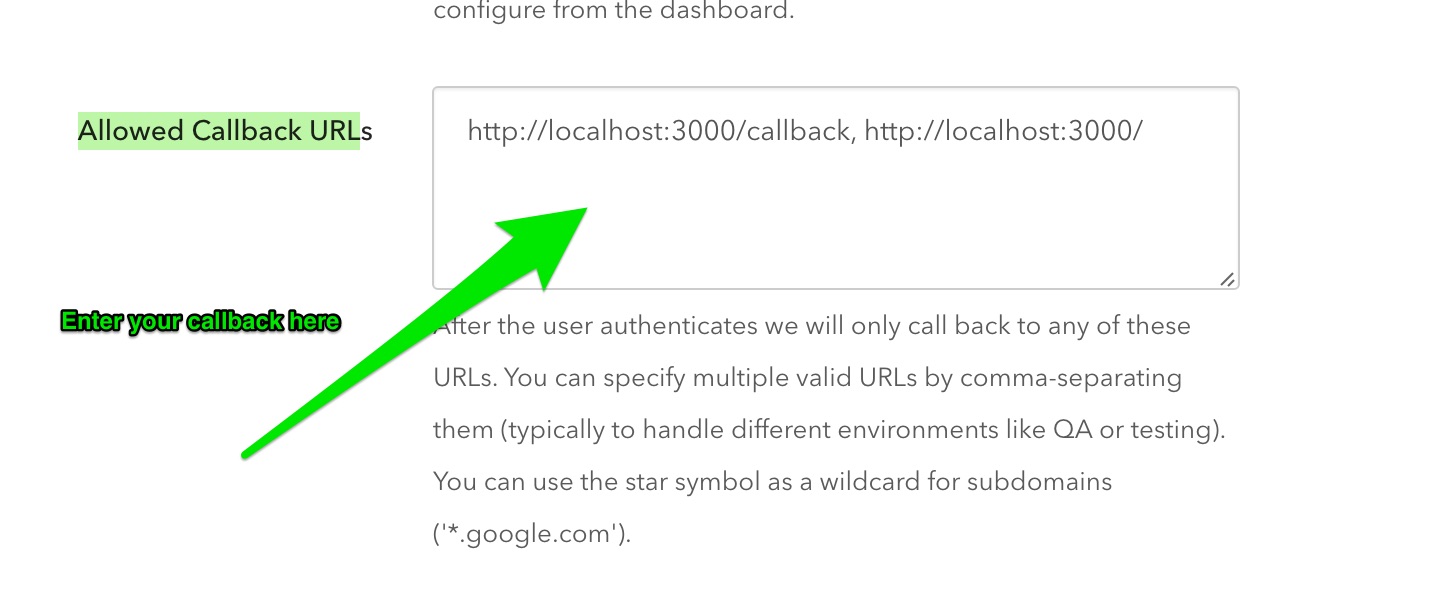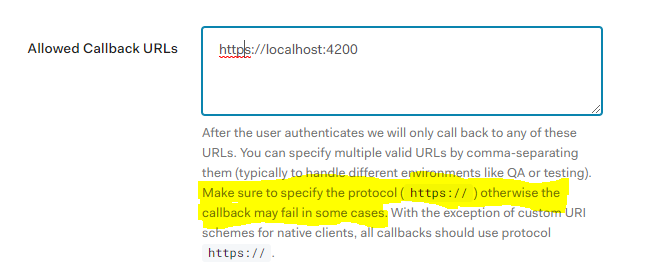the reason why you should set the callback Url in auth0 settings, because any one can use your client id and send request to google or linkedin, get the response to anywhere they set. but with this setting only you can access that response.
once your app is authorized to pull the data from linkedin, linkedin will send the data to where you specified. you should create a page to handle the response from Linkedin server. Let's name that page callback.js and this will be an example of response object.
accessToken: "hNuPLKTZHiE9_lnED0JIiiPNjlicRDp"
appState: null
expiresIn: 7200
idToken: "eyJ0eXAiOiJKV1QiLCJhbGciOiJSUzI1NiIsImtpZCI6Ik5FRXdSVUl5TURVeE4wSkJPRFZEUlRKRU1EVkZNemsxTXpNNU5VTXlNRGt6T0VWQlJqUkZRUSJ9.eyJodHRwOi8vbG9jYWxob3N0OjMwMDAvcm9sZSI6InNpdGVPd25lciIsImdpdmVuX25hbWUiOiJvbWFyIiwiZmFtaWx5X25hbWUiOiJpYm8iLCJuaWNrbmFtZSI6Im9tYXJpYm8xOTgyIiwibmFtZSI6Im9tYXIgaWJvIiwicGljdHVyZSI6Imh0dHBzOi8vbGg1Lmdvb2dsZXVzZXJjb250BQUFBQUkvQUFBQUFBQUFBQUEvQUNIaTNyLTEwLTEyVDIyOjU4OjAxLjgzM1oiLCJpc3MiOiJodHRwczovL3BvcnRmb2xpby15aWxtYXouYXV0aDAuY29tLyIsInN1YiI6Imdvb2dsZS1vYXV0aDJ8MTE0MDY0NTA2ODI2OTgwNTA5ODY3IiwiYXVkIjoiUEdVY242RjRRS21PRkJhb1k0UFdCeWpjVzIyT09vNGMiLCJpYXQiOjE1NzA5MjEwODIsImV4cCI6MTU3MDk1NzA4MiwiYXRfaGFzaCI6InN0R1l5SnJaMHNnbVYzSWNLWjlPeFEiLCJub25jZSI6InRrOV95b096enRmVThVVjFVMlVFR3IyMW5ORW5abjk4In0.TYS7mM8N2d7jEHFdWQGTSeAAUaDt4-0SMUG3LrcQ1r3xzY0RMGsUsEszj5xqk1GE0cIlFS10xCOYKsuHSwsFLomC1EbLjntjkledHtfD0MW84cMoXN6a-x-1-bNwl3lMYJ98qklTrNvTvkQJ6DWhei3hJ8rs8dnbNyCfckNVU6ptJU-9ef1DwWfHRomW5LQ6WSDRHZScW697gdgBEMU-Nd2SddyHhQe0kVh6lKdcbnskEAyCJLE07jfM40RQI_8LJouFcpoyImcXSDZlKv90tYfVDq9_TwE3GNaSz5I5snn0457oCgz0vuX0JoCUiaDuTIX7XiyXnozW_DxGMuhk4w"
idTokenPayload: {http://localhost:3000/role: "siteOwner", given_name: "me", family_name: "you", nickname: "nck", name: "nm", …}
refreshToken: null
scope: null
state: "xkEbffzXbdOYPLkXOUkrQeb0Jysbnlfy"
tokenType: "Bearer"
//THIS CODE IS FOR NEXT.JS9
//auth.js
class Auth0 {
constructor() {
this.auth0 = new auth0.WebAuth({
domain: "portfolio-ys.auth0.com",
clientID: "PGUWJQKmOFBaoY4PWByjcW22OOo4c",
redirectUri: "http://localhost:3000/callback",
responseType: "token id_token",
scope: "openid profile"
});
this.handleAuthentication = this.handleAuthentication.bind(this);
}
//there are too many methods are defined here i put only relevant ones
handleAuthentication() {
return new Promise((resolve, reject) => {
this.auth0.parseHash((err, authResult) => {
console.log(authResult);
if (authResult && authResult.accessToken && authResult.idToken) {
this.setSession(authResult);
resolve();
} else if (err) {
reject(err);
}
});
});
}
setSession function is where you set the cookies based on response object. I use js-cookie package to set the cookie.
setSession(authResult) {
const expiresAt = JSON.stringify(
authResult.expiresIn * 1000 + new Date().getTime()
);
Cookies.set("user", authResult.idTokenPayload);
Cookies.set("jwt", authResult.idToken);
Cookies.set("expiresAt", expiresAt);
}
}
const auth0Client = new Auth0();
export default auth0Client;
callback.js
import React from "react"
import auth0Client from "./auth0"
import {withRouter} from "next/router"
class Callback extends React.Component{
async componentDidMount(){
await auth0Client.handleAuthentication()
this.props.router.push('/')
}
render() {
return (
<h1>verifying logging data</h1>
)
}
}
export default withRouter(Callback) //this allows us to use router


